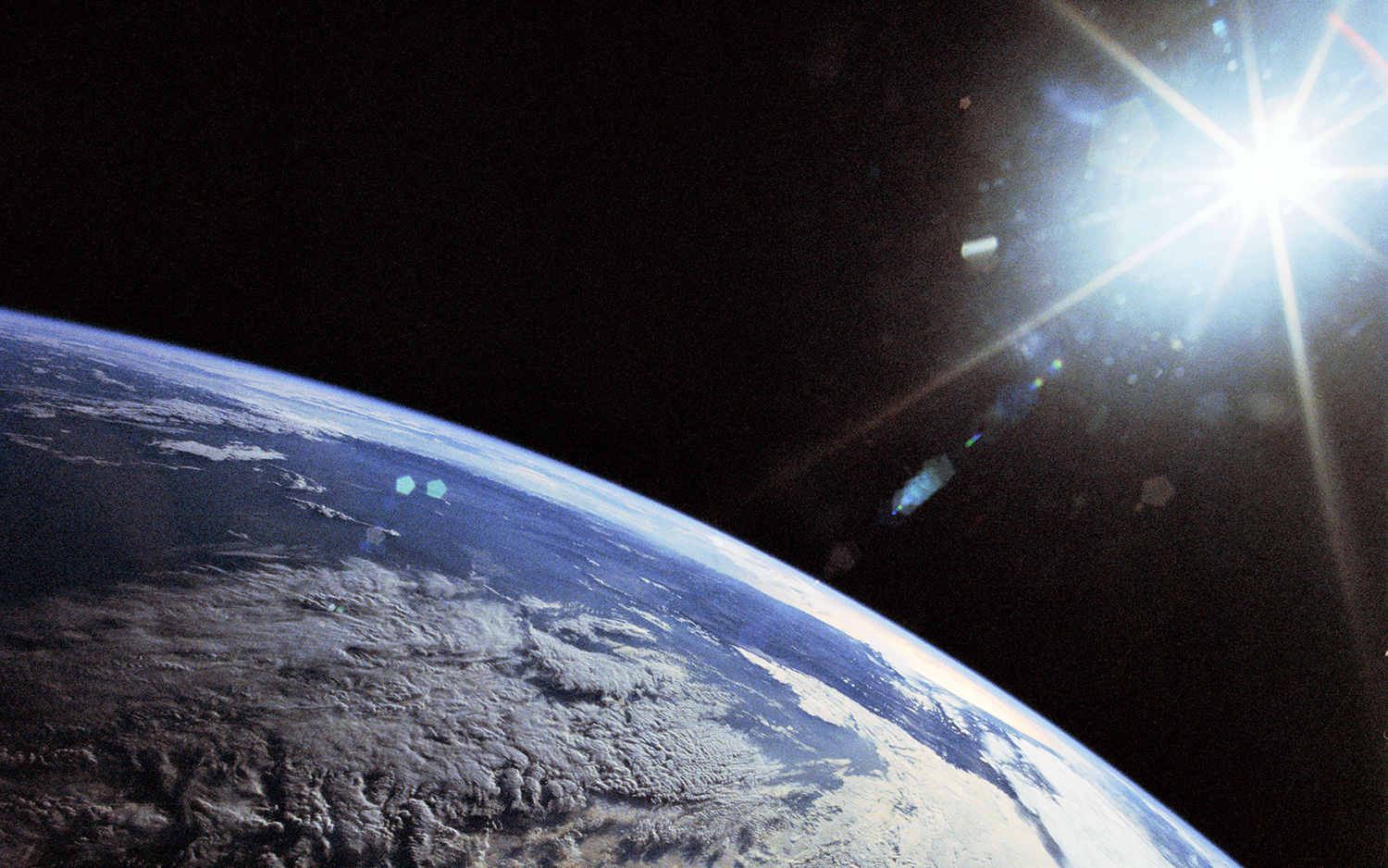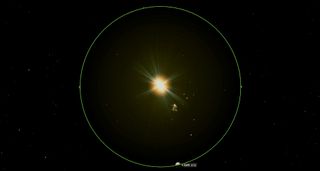Aphelion Day 2021: Earth is farthest from the sun today!

The Independence Day holiday weekend is upon us and the national weather forecast from NOAA is calling for afternoon high temperatures to hit at least 90 degrees Fahrenheit (32 degrees Celsius) across most of the High Plains, Intermountain, Desert Southwest and Pacific States. Near record-breaking high temperatures at or above 100 degrees F (38 degrees C) are expected across parts of six states.
In fact, it's expected to be as hot as the proverbial firecracker on the Fourth of July, with scorching readings of 101 degrees F (38 degrees C) at Spokane, Washington, 103 degrees F (39 degrees C) at Boise, Idaho and Medford, Oregon, 108 degrees F (42 degrees C) at Las Vegas, Nevada, 110 degrees F (43 degrees C) for Palm Springs, California and 112 degrees F (44 degrees C) for Lake Havasu City, Arizona.
So, it may surprise you to find out that despite those triple-digit temperatures, our planet will reach aphelion, the point in its orbit when Earth is farthest from the sun, at 6:27 p.m. EDT (3:27 p.m. PDT/22:27 UTC) on Monday, July 5. At that moment, the distance between the Earth and sun will be 94,510,886 miles (152,100,527 kilometers) as measured from center to center.
Related: The top 10 views of Earth from space
How far, the sun?
During this annual milestone, the Earth is 3,111,432 miles (5,007,364 km) farther from the sun than it was on Jan. 2, when Earth was at perihelion, its closest point to the sun for 2021; a difference of 3.3%. In terms of radiant heat received by the Earth, that makes a difference of nearly 7%.
If you were to ask people in which month Earth is closest to the sun, most probably would guess June, July or August. But the warm weather doesn't relate to the Earth's distance from the sun. It's because of the 23.5-degree tilt of the Earth's axis that the sun is above the horizon for different lengths of time at different seasons. The tilt determines whether the sun's rays strike the planet at a low angle or more directly.
At New York's latitude, the more nearly direct rays at the summer solstice of June 20 bring about three times as much heat as the more slanting rays at the winter solstice on Dec. 21. Heat received by any region is dependent on the length of daylight and the angle of the sun above the horizon. Hence the noticeable differences in temperatures that are registered over different parts of the world. And since it takes time for our atmosphere to fully absorb the build-up heat, there's a lag of roughly about a month from the time of the solstice to the hottest time of the year. That's why for temperate latitudes the highest mean temperatures are registered not in late June, but in late July.
Get the Space.com Newsletter
Breaking space news, the latest updates on rocket launches, skywatching events and more!
A climatological fallacy

When I attended Henry Bruckner Junior High School #101 in the Bronx, my Earth science teacher, Mr. Saul Shenberg, told all of us that because we were farthest from the sun in July and closest in December, such a difference would tend to warm the winters and cool the summers … at least in the Northern Hemisphere.
And yet the truth of the matter is that the preponderance of large land masses in the Northern Hemisphere works the other way and actually tends to make the winters colder and the summers hotter!
Interestingly, the times when the Earth lies at its closest and farthest points from the sun roughly coincide with two significant holidays. We're closest to the sun around New Year's Day and farthest from the sun around Independence Day. Actually, depending on the year, the date of perihelion can vary from Jan. 1 to Jan. 5 and the date of aphelion can vary from July 2 to July 6.
Joe Rao serves as an instructor and guest lecturer at New York's Hayden Planetarium. He writes about astronomy for Natural History magazine, the Farmers' Almanac and other publications. Follow us on Twitter @Spacedotcom and on Facebook.
Join our Space Forums to keep talking space on the latest missions, night sky and more! And if you have a news tip, correction or comment, let us know at: community@space.com.

Joe Rao is Space.com's skywatching columnist, as well as a veteran meteorologist and eclipse chaser who also serves as an instructor and guest lecturer at New York's Hayden Planetarium. He writes about astronomy for Natural History magazine, the Farmers' Almanac and other publications. Joe is an 8-time Emmy-nominated meteorologist who served the Putnam Valley region of New York for over 21 years. You can find him on Twitter and YouTube tracking lunar and solar eclipses, meteor showers and more. To find out Joe's latest project, visit him on Twitter.
-
rod As the article stated "Earth travels in an elliptical, or oval-shaped, orbit around the sun. As a result, the distance between Earth and the sun varies by about 3% throughout the year. When Earth reaches aphelion, the sun appears slightly smaller in the sky than at any other time of year, though the difference is not noticeable to the naked eye, according to In-The-Sky.org. (And you should never look at the sun without proper eye protection.)"Reply
The change in angular size of the Sun as viewed using telescopes (with quality and safe solar filters) is very noticeable throughout the year, especially comparing perihelion on 05-Jan-2020 this year with the size of the Sun today. At perihelion this year, the Sun was in Sagittarius, today the Sun is in Gemini. The Sun is 64" angular size smaller or just a bit more than one arcminute smaller size today as measured using telescopes. Some amateur astronomers take images of these differences and publish them. During the debates between geocentric astronomy and heliocentric solar system, the geocentric teachers said the Earth did not move, i.e. immovable Earth. The changing angular size of the Sun supports the heliocentric solar system and demonstrates that the distance between the Earth and Sun (astronomical unit), also changes throughout the year.